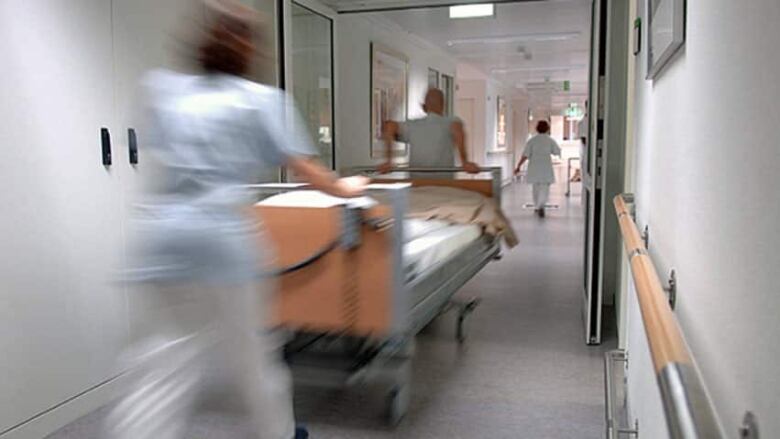Manitoba patients suffered delays, bed sores during height of pandemic, report shows
Latest critical incident report covers first 3 months of 2021

The latest critical incident report from Manitoba Health provides a window into the negative impacts COVID-19 was having on patient care during the deadliest wave of the pandemic.
One Manitoba patient died when an urgent after-hours CT scan was denied, leading to an 11-hour delay.
The case is among those highlighted in the quarterly report, which covers the first three months of 2021.
Another patient died after a doctor recommended an urgent surgical intervention, but the patient did not receive it.
While one patient was being transferred to another facility, malfunctioning equipment led to the patient's heath deteriorating, and their arrival at the facility was delayed.
Although the report does not count the incident among the official deaths from that period, it notes that the patient died several days after the incident.
The report also notes numerous incidents in which patients suffered severe health outcomes due to delays in getting a treatment or diagnosis.
In other cases, patients developed pressure ulcers and skin tissue degeneration commonly known as bed sores because staff did not intervene early enough.
Second wave
During the time covered by the report, Manitoba was in the midst of the second wave of COVID-19, which placed enormous pressure on staffing in the province's health-care system, said Sonia Udod, an associate professor in the department of nursing at the University of Manitoba.
"When the pandemic occurred, front-line health-care workers, namely nurses continued to work in severely constrained work conditions and crushing workloads," Udod said in an email statement provided to CBC News.
Udod called the statistics in the report "sobering" and suggested that inadequate staffing could have led to the critical incidents.

The quarterly reports note cases where people have suffered unintended harmwhile receiving health care in the province.
They include short descriptions of each event, but do not provide identifying factors or specific locations.
The pandemic created many problems that contributed to staffing shortages in Manitoba health facilities.
"Staff were concerned about bringing the virus home, they were working within a new reality, some staff tested positive and needed to be home, creating shortfalls in staffing," Udod said.
As a result, the quality of care for some patients declined, despite the best efforts of staff and health-care leaders, she said.
Bed sores linked to lack of staffing: union
This is indicated by the number of patients experiencing bed sores, which occur when patients remain in the same position for too long.
"There are many, many ways that patients are falling through the cracks in the system. When we're seeing things like an increase in the number of pressure sores, that is absolutely linked to a lack of staffing or an inability for staff to do turns," Manitoba Nurses Union president Darlene Jackson said.
Jackson attributes the bed sores and ulcer incidents which are "100 per cent preventable" to the number of nursing and health-care vacancies.
"[It] takes two individuals to turn a patient. What we're seeing is often [staff] don't have the ability to find a second person to help."
Out of the 40 incidents included in the report, 11 are classified as deaths. That's a decrease from the previous report, covering the last three months of 2020, when 35 incidents were recorded as deaths.
The incidents also likely involve more than 11 deaths. In three incidents, the report states that "residents developed a health-care acquired infection."
The report states that "critical incidents related to COVID-19 outbreaks in hospitals or personal care homes are reported as groups."
Since the time of the report, staffing has remained a challenge for Manitoba's health care system, while a backlog of tens of thousands of procedures has only recently begun to shrink.
Many of the nurses leaving the public health system are recent graduates, Jackson says. During their training, they're given a manageable number of patients, only to be overwhelmed when they enter the health-care system.
"When they get into the real world and into the health-care system, their workload is absolutely crushing. They get very disillusioned and say, "That's not what I signed up for."
Even without the presence of a pandemic, Udod says the human resource crisis within the health-care system poses a significant risk to patients.
Jackson agrees.
"I think that we're going to see a rise in these critical incidents, and I think that's unavoidable unless we can get on top of this nursing shortage and start to address it."












_(720p).jpg)


 OFFICIAL HD MUSIC VIDEO.jpg)
.jpg)



























































































